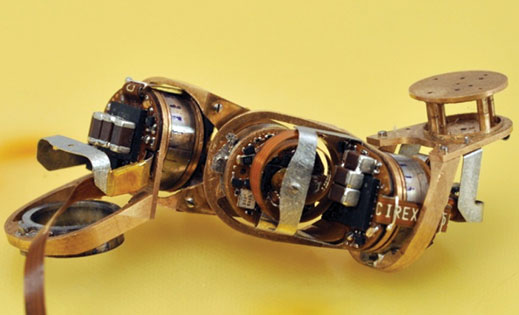A little device that resembles a mechanical inchworm could usher in a new generation of robots that can fold themselves up into almost any shape imaginable—a diminutive real-life version of the robots in the Transformers movies.

The device is called a milli-motein—a reference to its millimeter-sized components and a motorized design inspired by proteins, which naturally fold themselves into incredibly complex shapes. “It’s effectively a one-dimensional robot that can be made in a continuous strip, without conventionally moving parts, and then folded into arbitrary shapes,” says Neil Gershenfeld, head of MIT’s Center for Bits and Atoms, who created the device with visiting scientist Ara Knaian and postdoctoral associate Kenneth Cheung.
To build it, the research team had to invent an entirely new kind of motor: one that is not only small and strong but also able to hold its position firmly even with the power switched off. (When an ordinary electric motor is switched off, its shaft can rotate freely.) The researchers met these needs with a new system called an electropermanent motor.
Don’t settle for half the story.
Get paywall-free access to technology news for the here and now.